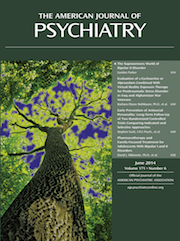Human infants are evolutionarily prepared to expect caregivers to provide protection from danger. As an altricial species, humans are born highly dependent on parents for help regulating many behavioral and biological systems. In terms of our evolutionary history, infants would not have survived without caregivers. Therefore, our species did not develop behavioral or biological strategies for coping with the lack of caregivers. Yet, in institutional settings, the absence of dedicated caregivers is exactly what infants face, leaving them to cope with conditions for which they are not equipped. The most extremely depriving institutions were seen in Romania, with these conditions exposed to outsiders when Ceauşescu was overthrown in 1989. It was in this context that Charles Nelson, Nathan Fox, and Charles Zeanah began what has become the most important study of institutionalized care ever conducted.
In their book, Romania’s Abandoned Children: Deprivation, Brain Development, and the Struggle for Recovery, Nelson, Fox, and Zeanah describe the Bucharest Early Intervention Project from its conception to current findings. They were part of a MacArthur working group that had been studying the effects of deprivation on various species. The work of another network member, Judy Cameron, on deprivation with rhesus macaques brought home the importance of the timing of deprivation, with rhesus infants separated at 1 week of age showing a qualitatively different constellation of behaviors than those separated at 1 month of age. Nelson, Fox, and Zeanah were struck with the parallels in behaviors described among infants and young children in the Romanian orphanages.
Gradually, the possibility of conducting a randomized clinical trial in the orphanages became a reality. Although experimental studies had been conducted among nonhuman species, such as the work of Cameron, the effects of institutional care had never been examined experimentally with humans. The Bucharest Early Intervention Project is exceptional for many reasons but most especially because it is the only randomized clinical trial of institutional care that has ever been conducted. The importance of a randomized clinical trial cannot be overstated. Without such a trial, differences between institutionalized children and children moved into the community could be the result of some confounding factor.
The book chronicles the issues faced, from political to ethical to scientific, in moving forward with this study. The investigative team was led by a cognitive neuroscientist (Nelson), a developmental psychologist (Fox), and a psychiatrist (Zeanah). The synergy developed among these three talented scientists and their larger team resulted in breakthrough findings.
Children who were in the Romanian orphanages were randomly assigned to care as usual (which typically meant continued institutional care at least in the short-term) or high-quality foster care. Additionally, a group of Romanian children who were living with their parents and who had no history of institutional care were included as a comparison. Strikingly, institutional care was found to have profound effects across virtually all domains. Children who were randomly assigned to foster care showed better outcomes in growth (height and weight but not head circumference), in various measures of attention, in attachment security, and in peer relations than children who were assigned to care as usual. Children who were placed into foster care at younger ages (especially before around age 2) typically showed better outcomes than children placed at older ages.
The work is described in ways that will be interesting to researchers and yet still accessible to the educated lay public. For example, EEG and event-related potential studies are presented such that the naive reader can understand both the methodology and the meaning of the findings fairly thoroughly. Unless a researcher has carefully followed all of the study reports over time, he or she will not be familiar with all of the constructs studied, and detail at this level will be invaluable.
The authors arrive at three key conclusions that have profound implications. First, the effects of institutional care are pervasive and pernicious. Second, timing is of the essence: infants and young children cannot wait for systems to change, for parents to receive treatment, etc. Their brains develop, and remediation becomes more difficult the longer the adverse conditions last. Third, in moving from institutional care, it is critical that a system of high-quality foster care be developed.
Where then do the findings of Romania’s Abandoned Children take us? Clearly, institutional care has devastating effects on nearly every domain of functioning, and yet children are in institutional settings all over the world. A number of groups are working to ensure that infants and young children in the United States do not enter institutional settings (e.g., emergency shelters) even for brief periods of time. Others are working to try to change the tide in other parts of the world. The Bucharest Early Intervention Project provides the incontrovertible evidence needed for the arguments mounted.

